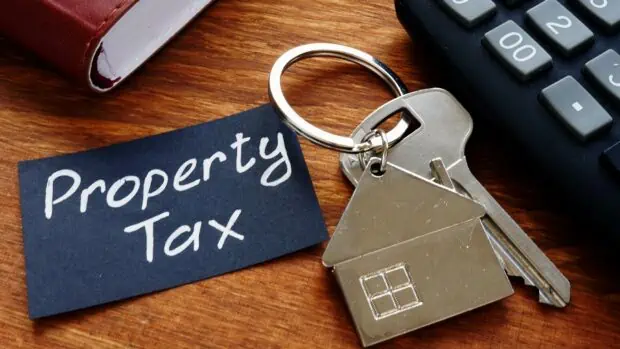Traditionally, getting a mortgage meant putting a 20% down payment on a home. Nowadays, it’s no longer a requirement nor is it unusual to qualify for a mortgage with a smaller downpayment. But putting paying less upfront comes at a cost. Homebuyers with less than a 20% downpayment will have to take on private mortgage insurance (PMI) which can add hundreds of dollars to the monthly mortgage payment.
Fortunately, there’s a solution that can offer the best of both worlds. Piggyback loans allow for making a lower down payment while still receiving the benefits of a traditional mortgage and avoiding PMI. Is this the right financial strategy for you? Here’s what a homebuyer should know.
What is a piggyback loan?
A piggyback loan, also called an 80-10-10 loan, is a combination of one large and one small loan, effectively taking out two mortgages for the purchase of a single property. The bigger portion of the loan is the ’80’ and is the first or primary mortgage and applies towards 80% of the home’s sales price.
The remaining 20% of the home cost is further divided in half, hence the two ’10’s. The first one represents a 10% down payment and the second is the “piggybacking” loan providing the remaining 10%. This combination adds up to 20% and allows buyers to avoid private mortgage insurance.
What are the benefits of a piggyback loan?
The primary benefit of piggyback loans is to avoid paying PMI. PMI is a type of insurance that protects the lender if the homeowner stops paying the mortgage and is required on all loans with down payments of less than 20%.
PMI can be anywhere from 0.22% to 2.25% of the original loan, the exact number is based on credit score, the house’s loan-to-value (LTV) ratio, and debt-to-income ratio. While a few percentage points may not sound like much, they can make the difference between being able to afford a mortgage payment. For example, if you took out a mortgage on a $400,000 home after putting 3% down, your PMI could add between $187.50 to $601 to your mortgage payment every month.
Another benefit is that piggyback loans mean buyers can make a lower down payment, allowing them to keep more cash on hand, avoiding the dreaded ‘house poor’ circumstance which can quickly land a person in other types of debt.
What are the downsides of a piggyback loan?
The nature of piggyback loans means having multiple loans. This also means buyers will face two sets of closing costs like origination or administrative fees. These loans typically have different terms as well, with the second piggybacking mortgage typically having higher interest rates. Not only do piggyback loans tend to have a higher interest rate, but they’re usually variable as well. Should market interest rates go up, the interest charges could potentially eat into any savings from not having to pay PMI.
Another potential downside is that buyers are on the hook for the piggyback loan until it’s paid off. PMI, on the other hand, can be canceled once 20% equity in the home has been achieved. Buyers will need to consider whether the short-term of benefits of having a lower downpayment outweigh the total cost over the life of the piggyback loan.
Lastly, managing two loans is more complex than just one, meaning twice as many financial details to keep track of. Piggyback loans require diligence and a willingness to budget and plan. And even though it’s only considered a secondary loan, failing to make payments can have serious consequences for a homebuyer.
A step-by-step guide to piggyback loans
Step 1: Take stock of your finances
The first step in home-buying, regardless of loan type, is assessing your financial health. You’ll need to look at your credit score, how much debt you carry, and your income security.
If you struggle to make monthly rent payments, live paycheck to paycheck, or have no emergency fund, it may not be the best time to buy a home. However, a piggyback loan might work for you if you have some money put away for a home and have a solid credit score and stable income.
Step 2: Find the right lender
Not every mortgage lender offers piggyback loans, and those who do can vary in interest rates and fees. It pays to shop around and get the rates and terms from at least three lenders before selecting the one that works for you.
Step 3: Get pre-approved for a primary mortgage
Pre-approval for a primary mortgage shows sellers that you are serious and interested. It also helps you focus your home search on homes within your budget. Buyers who skip this step are often shocked by how challenging it is to actually purchase a home.
Step 4: Apply for your piggyback loan
It’s a common myth that you should wait to apply for your piggyback loan until you find a house to make an offer on. These two mortgages should be applied for simultaneously as the second mortgage may be harder to get. Keep your application and documents for each loan filed together for easy reference.
Step 5: Synchronize your loans
Managing two loans and two lenders is like a dance, there are a lot of things that have to come together in order to be in sync. Doing so is easier if the same lender holds both loans, though this isn’t required. Some buyers opt for a different lender for their piggyback loan because the interest rate is slightly lower. You may pay a little less over time, but the headache of such an arrangement might not be worth it.
Step 6: Head to closing
On closing day you’ll sign a thousand different documents pertaining to the purchase of your home and hand over a big check to cover closing costs (part of any mortgage). Now imagine that process and then double it since you’ll be closing both loans on the same day. This may cause the process to take a little longer, but take the time to thoroughly review both loan documents and ensure that the interest rates and repayment terms match what was initially offered for both loans.
Step 7: Pay your loans
And so begins the long march towards owning your home free and clear. If you’ve only ever paid one monthly bill for housing, it can take some time to adjust to having double the responsibility. Some new homeowners opt to make automatic payments on the piggyback loan (the smaller of the two) so they can focus on the primary loan.
Step 8: Watch your equity grow
When you have at least 20% equity in your home you’ll have the option to refinance your home and roll both loans into one. This can be a lot more challenging if you have two different lenders for the primary and piggyback loan which is another factor to consider.
Is a piggyback loan right for you?
A piggyback loan can help you better manage your finances and avoid costly PMI, but real estate is complex and you’ll need to weigh short- and long-term benefits with their respective drawbacks. These loans are not without risks, and some people struggle with the financial complexity of managing two loans. Talk to a financial advisor to help you decide if a piggyback loan is what you need to achieve homeownership.
If your finances aren’t in a place where you can afford a mortgage even with the help of a piggyback loan, talk to an expert from Debt.com today who can help you find solutions to reduce debt and increase your savings with one free phone call.






